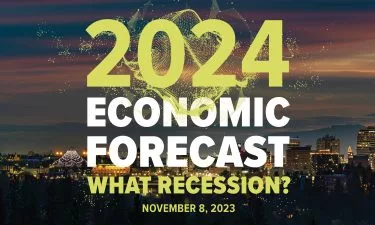Of disinflation, experiments and surprises
Many of the same issues we faced last year remain with unknown answers

The war in Ukraine has shown the world that cheap drones and cameras make surprise moves of large formations almost impossible. The same cannot be said about the economic world.
Last year the expectation was that in 2023 a recession was likely in the wake of the Fed’s efforts to curtail the post 2020 inflation. Yet here we are in late 2023, no recession yet and growth far above early year expectations.
The risk remains.
The tightening of monetary policy continued through half of 2023, long rates jumped in the fall, and the inversion remains. The labor market remains robust rather like the Energizer Bunny. The run up in rates and the impact on asset prices gave us high profile bank failures in the spring of 2023. It reminded people that when rates go up, bond prices and the value of fixed rate obligations go down. Credit availability tightened.
Pandemic savings leftovers, refi reduced mortgage payments, and the drawn-out nature of the infrastructure and other programs have helped support spending and employment. The Chips and Science Act and the “Inflation Reduction Act” are attempts to restructure the U.S. economy with incentives for favored industries and groups in efforts to decarbonize, electrify and wall off the nation over a period of years.
The increase in mortgage rates has resulted in falling building permits and resales, but rising prices. Most mortgagors have sub 4% mortgages and are in no hurry to sell, keeping the inventory low and supporting prices. Consider the 3% mortgage of 2021 is now 8% with a higher home price, cratering affordability. This is not a replay of the 2006-2009 collapse.
Inflation has retreated from the highs of mid-2022, with healing supply chains, weaker commodity prices, and normalizing demand patterns, but remains above the Federal Reserve’s target. The Fed’s commitment to reaching their target is unchanged, reaffirmed at Jackson Hole in August. The September Fed pause with the funds rate at 5.25% to 5.5% may be the end, but they kept the option for further rate increases. The path forward will depend on evidence that inflation is still moderating, and wage growth is subsiding.
October saw a jump in long-term rates to levels not seen in more than a decade. A “soft landing” or “immaculate disinflation” is the current hope and predominant forecast, but these are rare occurrences. These are the same issues that faced us last year, and the answers are still unknown.
As we near 2024, inflation has been on a moderating trend with periodic setbacks, the labor market has remained strong. However, the October Beige Book revealed a softening labor market and evidence of more modest wage growth.
The tightening of monetary policy is still working through the system. Housing construction has fallen, and there are millions of commercial loans that will reset at substantially higher rates. Many leases of office space that are current will not be renewed with accompanying effects on values and lenders.
Events elsewhere in the world may give us supply shocks. Some borrowers are faced with the resumption of their student loan payments while others have shifted the debt to the general taxpayer via federal policy. Atop this we have the recent chaos in the political process that adds to uncertainty and global instability. The coming year is likely to see a shift to slower GDP growth of 1% to1.5% as the lags play out.
In fiscal 2023 the federal deficit was at $1.7 trillion at a time of robust employment and in the 4th year of this upturn. Interest costs rose 34% -- higher rates as old debt matured and was refinanced, and new debt issued. The CBO expects the pattern to continue.
Looking at the world conflicts, the necessity of increased defense expenditures is apparent with the wars in Europe and the Middle East and the competition with China in the Pacific. This plus the aging population means a collision in the financial markets and makes it very unlikely that the low rates of most of the period since the Great Recession will return.
The nation’s experiment with industrial policy favoring semi-conductors, renewable energy, battery research, increased regulation, trade restrictions, domestic production, price controls on drugs is in its infancy. The impact on long-term performance will only be evident years into the future, but it is a major reversal of our previous stance. The global historical record of centralized decision making (think Soviet Union & China now) is not promising. Knowledge is distributed throughout the population and the world.
The coming year might see the long-awaited recession or a soft landing, but there will likely be surprises along the way.
Dr. John Mitchell, who currently is principal of M&H Economic Consultants, previously served as chief economist of U.S. Bancorp.
Related Articles
Related Products

_c.webp?t=1763626051)
_web.webp?t=1764835652)

